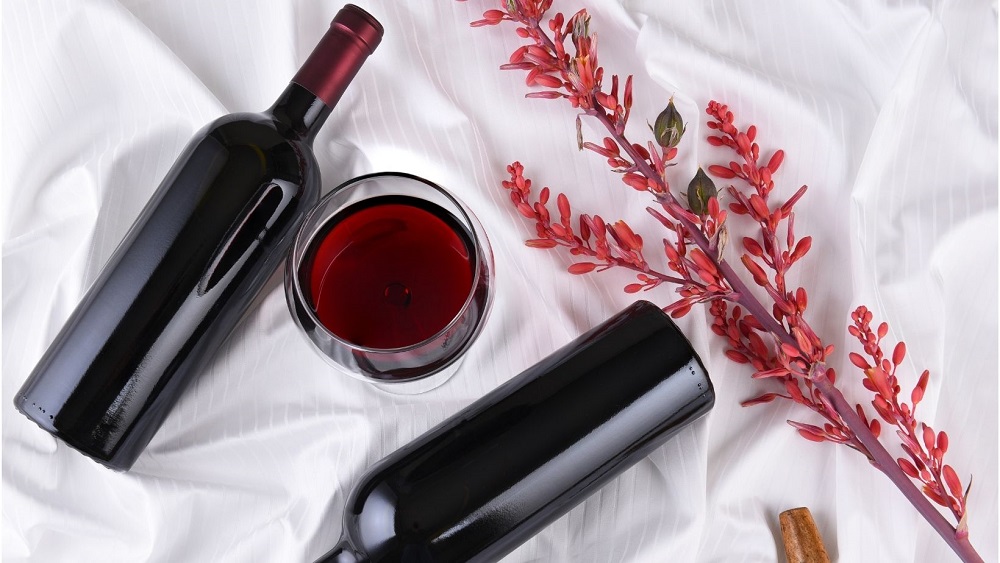Newcomers to the complicated world of wine may come across the term “Burgundy wine” quite a lot. Burgundy wine simply refers to any wine made in the Burgundy region of France.
That doesn’t quite explain why the term is so prolific. Burgundy is only one of many wine regions, and a small one at that. However, unique geographical circumstances mean that Burgundy wine is often considered some of the finest wine in the world.
When discussing Burgundy wine, there are two varieties that dominate the conversation. Burgundy red, or Pinot Noir, and Burgundy white, or Chardonnay.
These two wines make up the vast majority of wine from Burgundy, and are what people generally refer to when they mean Burgundy wine. While other grapes are grown in the area, it’s these varieties that attract the most attention – and the highest prices.
Exactly what makes Burgundy wine so desirable is believed to be the terroir. This unusual term refers to something that’s hard to categorize.
The terroir is the unique feel and place of a wine, the sense of geography that can be found in the glass. The terroir is created in everything from the sunshine, the soil, the rocks, and the human touch.
Burgundy wine has some of the greatest terroir around. With every sip you take, you can get a real sense of how this wine came to be.
The idea of terroir, and how it relates to Burgundy, is not a new discovery. In fact, wine of some variety has existed in Burgundy since Roman times, and possibly before.
However, it didn’t really gain popularity until the Middle Ages, when monks and monasteries began to move to the area.
Understanding how climate and terrain influenced wine making, they quickly recognized Burgundy as a place with much opportunity. Over time, the reputation of Burgundy only grew.
What makes this terroir so fantastic, and why it was known even to the Romans, is the Jurassic limestone.
With fossilized sea creatures sitting just below the surface of the vineyard, the wine is imbibed with this unique minerality.
The Pinot Noir from Burgundy is sensual and fruity, with a sensational aroma. The Chardonnay, on the other hand, is firm, with a bite of acidity and a delightful mineral undertone.
There are many wine producers in Burgundy, many of whom create limited bottlings. After the French Revolution, Napoleonic land laws resulted in strictly divided vineyards.
With only a few vines, Burgundy winemakers only have the means to craft a limited number of casks.
With such high-quality wine being scarce in amount, it’s no wonder that prices have continued to rise. Today, some of the most expensive wine ever sold comes from these small Burgundy vineyards.
The regions of Burgundy
Burgundy is divided up into five wine regions, each with their own unique appeal.
Chablis
The most northern region of Burgundy, Chablis is actually closer to Champagne. This can be seen in the cooler climate and chalky limestone, and it’s been a wine growing region since the 12th Century.
The grape grown here is Chardonnay, and the cold summers and warm winters lead to a crisp wine with a rich minerality.
Côte de Nuits
Some of the most expensive vineyards in the world are found in the Côte de Nuits. Many of the Grand Crus of Burgundy are located here, growing the finest Pinot Noir.
The red has classic fruity boldness, with a deep earthy undertone. The Pinot Noir is long aging, making them a popular investment choice.
Côte de Beaune
With a warmer climate than northern Chablis, the Chardonnays of Côte de Beaune are golden and heavy. Although reds are found here as well, it’s these bolder Chardonnays that the region is famous for.
The Côte de Nuits and Côte de Beaune are together known as the Côte d’Or. Translated to “Golden Slope” It refers to the hillside vineyards that get more sun, and less frost. Together, these are considered to be the greatest regions in Burgundy.
Côte Chalonnaise
There may be no Grand Crus in Côte Chalonnaise, but the region has its fair share of fans. Generally less expensive, the Pinot Noir is fruity, with subtle wooden flavorings. Côte Chalonnaise is also known for its Aligoté – the other white grape of Burgundy. These wines are floral with a bite of citrus.
Mâconnais
The most southern region of Burgundy, the Chardonnay found here is warm and fruity. A rich wine, it’s often the cheapest of all wines in the region (earning it more than a few followers).
The classification of Burgundy wines

Grand Cru
The greatest of the great wines, the Grand Cru classification is given only to the very best vineyards. There are 33 Grand Cru vineyards in Burgundy, making up just 1%-2% of the total wine produced.
These are the vineyards that get the very best conditions, where the sun sweetens the grapes away from harsh frosts. Grand Cru wines can sell for tens of thousands of dollars.
In fact, the Romanée-Conti 1945 from the Côte de Nuits sold at auction in 2018 for over $500,000.
Premier Cru
A slight step down from the Grand Cru, Premier Cru wines make up 12% of the wine production in Burgundy. The factors that determine the difference between a Grand and a Premier are miniscule, with some vines being barely feet away from each other. These are still high-quality wines that sell for high prices.
Village Wines
Village wines account for 37% of wine produced in the region, and some real bargains can be found in this classification. These wines may be slightly less complex than the Grand and Premier Crus, but they still have the terroir the region is known for.
Regional Wines
Regional wines can be made from a combination of vineyards, leading to less clarity of taste. These make up 50% of the wines from Burgundy, and there’s a range in quality.
Even a regional variety is still a lovely wine, due to the unique terroir of the area.

